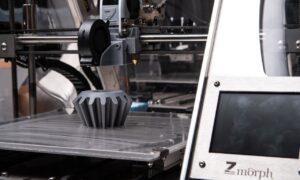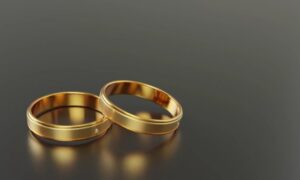Welcome to a realm where innovation meets imagination, where boundless creativity knows no limits, and where opportunities are as infinite as the stars above. Today, we extend an invitation to embark on an exhilarating journey from idea to reality, as we venture into the captivating universe of 3D printing in jewelry design. With its groundbreaking technology and unparalleled precision, this transformative process has redefined how artists bring their concepts to life. Join us as we unveil the remarkable benefits awaiting those who dare to embrace this game-changing tool for crafting exquisite wearable art. Fasten your seatbelts and get ready for a captivating voyage through time and space – welcome aboard!
Introduction to 3D Printing and Personalization in Jewelry Design
Three-dimensional (3D) printing, also known as additive manufacturing, is the method of constructing a three-dimensional object from a digital file. It finds application in numerous industries, including jewelry design.
Customization stands as a primary advantage of 3D printing in jewelry design. Through 3D printing, designers can craft unique pieces that cater to specific customer preferences. This level of personalization is unattainable using traditional manufacturing techniques.
Another benefit of 3D printing in jewelry design is the ability to conceive intricate designs that would be challenging or even impossible to create using conventional manufacturing methods. With 3D printing, designers enjoy greater freedom to explore complex, intricate designs that are bound only by their imagination.
3D printing also empowers jewelry designers to produce small batches or individual pieces on demand, eradicating the necessity for excessive inventory and offering customers a wider spectrum of choices.
Overall, 3D printing grants jewelry designers the freedom and flexibility to produce one-of-a-kind, custom-made pieces that perfectly align with their clientele’s style.
Advantages of 3D Printing for Jewelry Designers
A multitude of advantages accompanies 3D printing for jewelry designers. Foremost, it facilitates a high degree of customization. Each jewelry item can be designed to match the wearer’s preferences, rendering every piece uniquely distinct.
Furthermore, 3D printing permits designers to craft intricate designs that would be unattainable using conventional methods. This enables designers to push the boundaries of creativity and conceive genuinely groundbreaking designs.
Additionally, 3D printing offers a relatively swift and straightforward way to fabricate prototypes and assess novel designs. This allows designers to economize both time and resources by rapidly prototyping and evaluating new ideas before committing to production.
Distinct Types of 3D Printers and Technologies
The realm of 3D printing technology has witnessed remarkable advancement in recent times, presenting an array of 3D printers catering to various needs. Each type of 3D printer boasts unique merits and drawbacks, necessitating a suitable choice based on specific requirements.
Here is a concise overview of some prominent types of 3D printers:
Fused Deposition Modeling (FDM) Printers: FDM printers are the most prevalent variety, extruding melted plastic filaments through a nozzle to create objects layer by layer. Affordable and user-friendly, FDM printers are ideal for beginners, though they exhibit relatively lower resolution and slower speeds.
Stereolithography (SLA) Printers: SLA printers employ UV light to solidify liquid resin into objects. These printers produce high-resolution prints with intricate details, though they entail a steeper learning curve and higher costs compared to FDM printers.
Selective Laser Sintering (SLS) Printers: SLS printers employ lasers to fuse small particles of plastic, metal, or ceramic powder, yielding fast production of intricate shapes at a higher expense.
Multi-Jet Fusion (MJF) Printers: MJF printers use heat, pressure, and liquid binding agents to fuse plastic particles into objects. Swift and capable of intricate detailing, MJF printers offer an economical choice for prototyping and production.
Direct Metal Laser Sintering (DMLS) Printers: DMLS printers employ lasers to fuse metal powders into solid objects, suitable for intricate metal parts but demanding special post-processing. DMLS printers are the costliest in the market.
Guidelines for Selecting the Right Printer for Your Requirements
Choosing an apt printer for your jewelry design endeavor requires consideration of several factors. Primarily, the type of materials employed for printing demands scrutiny, with printers tailored to metals, plastics, and even paper. Each material type carries distinct advantages and drawbacks, necessitating a printer compatible with your predominant materials.
Dimension and scale considerations for your print pieces are pivotal. Certain printers excel with small items, while others are geared for larger projects. Opting for a printer capable of accommodating a range of sizes is prudent if unsure about the predominant size requirement.
Financial constraints warrant attention, as printer costs span from modest to substantial. Balancing functionality and affordability ensures an optimal fit for your jewelry design business. Armed with these insights, your quest for the ideal printer for your jewelry design venture is on its way to fruition!
Creating a 3D Model of Your Design
Novices in 3D printing may wonder about crafting a 3D model for their designs. Commence by producing a 2D drawing or sketch of the design. Upon completing the sketch, import it into a 3D modeling software.
Numerous software options cater to 3D modeling, including Autodesk Fusion 360, Rhinoceros, and Blender. Each software offers distinctive features and tools for constructing a 3D model.
Once the model is ready, export it as an STL file. This file is then either sent to a 3D printing service or directly to a 3D printer for fabrication.
Perfecting Touches: Enhancing Through Coloring, Polishing, and Post-Printing Techniques
In jewelry design, the finishing touches are as pivotal as the overall design itself. 3D printing facilitates the inclusion of intricate details and unique color blends that challenge traditional manufacturing techniques.
Flexibility concerning sizing and scale emerges as another forte of 3D printing. For those aiming to create truly distinctive pieces, 3D printing is the optimal route.
Considerations for opting for 3D printing for your jewelry project encompass:
- Ensuring possession of a high-quality model or STL file, guaranteeing alignment with your vision.
- Attentiveness to model orientation, influencing the final piece’s aesthetics and feel.
- Diligent material selection, as diverse materials yield varied outcomes, necessitating the right material for your project.
- Deliberation over post-processing steps like coloring and polishing, which can elevate the visual appeal of your 3D printed jewelry.
Illustrations of Ingenious Applications of 3D Printing in Jewelry Design
3D printing remains a dynamic technology, continually evolving and sparking novel, inventive applications. Among the industries benefiting from 3D printing, jewelry design shines. Here are instances illustrating how 3D printing pioneers unique, splendid jewelry:
Singular Creations: 3D printing enables crafting unparalleled pieces unfeasible with traditional approaches, ensuring each jewelry piece stands uniquely remarkable, tailored to the wearer’s style.
Prototype Crafting: Swiftly generating prototypes for new designs facilitates fit, comfort, and aesthetic assessment before progressing to the final product, aligning with designer and customer expectations.
Customization Galore: 3D printing empowers crafting highly customized jewelry incorporating customer initials, measurements, or other personal elements.
These instances merely scratch the surface of 3D printing’s influence on jewelry design. As technology evolves, more imaginative and innovative applications are poised to emerge in this domain.
Conclusion
In the realm of jewelry design, 3D printing surpasses traditional methods in a myriad of ways. Primarily, it empowers crafting intricate designs unattainable through conventional means. Moreover, it facilitates customization, allowing each jewelry piece to be meticulously tailored to the wearer. Additionally, the efficiency and ease of 3D printing enable cost-effective production of unique pieces or small batches.
Collectively, these benefits coalesce to position 3D printing as an enticing prospect for jewelry designers. If your goal involves creating distinctive, intricate, or personalized pieces, 3D printing holds immense promise as the solution of choice.”



































